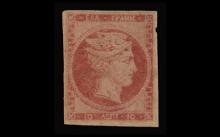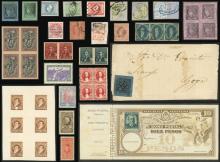Postal System in Korea
Published

The use of modern postal system in Korea started on a rough spot complete with arson and an armed conflict. Right now, stamp collectors love the stamps that come out of Korea, but only few people know the real story behind the stamps and what happened in 19th century Korea, a time when an official stamp system was about to be started.
A check with Korea’s postal history reveals the planned five stamp values that were to be issued in 1884. But of the five, only two values eventuallt appeared in stamp catalogues. The story of the other three and country’s attempt to adopt a modern postal system took an interesting and turbulent turn that will surprise, frustrate and inform stamp collectors and history lovers alike.
The introduction of Stamps to the ‘Hermit Kingdom’
It was a turbulent late 19th century for Korea, then known as the ‘Hermit Kingdom’. This was the time when the kingdom was locked in battle on all fronts - with ongoing battles against the Japanese and the Chinese. Starting 1880, the kingdom was dominated by China with the backing of of Queen Min and King Kojong. It was a time of traditionalism where modern thoughts were generally suppressed. But one bright spot was the plan to adopt a modern postal service.
Setting up a Postal System
A significant development happened with the appointment of Hong Yong Sik in March 27, 1884 as the Postmaster General. He immediately set to work commitioning five stamps from the Stamp Bureau at the Ministry of Finance in Tokyo. Official work started on December 4 to come up with these stamps. Two stamps values- 5-mon red and 10-Mon blue were the first stamp values. Some postage stamp collectors have discovered a few samples that leaked out before official release.
From Anticipation to Frustration
What should have been a celebration of the official issue of the stamps was turned into a day of turmoil. A coup d’état was staged by the reformists with Japanese and Western backing that paralyzed the government with some officials murdered and the King and the Postmaster seized. The central post office was not spared - rioters burned it to the ground and the stamps were thrown into the streets and burned. The government managed to regain control but the idea of using modern stamps disappeared into thin air.
The other stamp values including 25m, 50m, and the 100m did not materialize, thus the regime could adopt a modern postal system. There were other values that surfaced soon after and were used for taxation, shipping and customs. After more than a decade, new stamp values were introduced but the other two values from 1884 remained a footnote in the country’s postal history.








